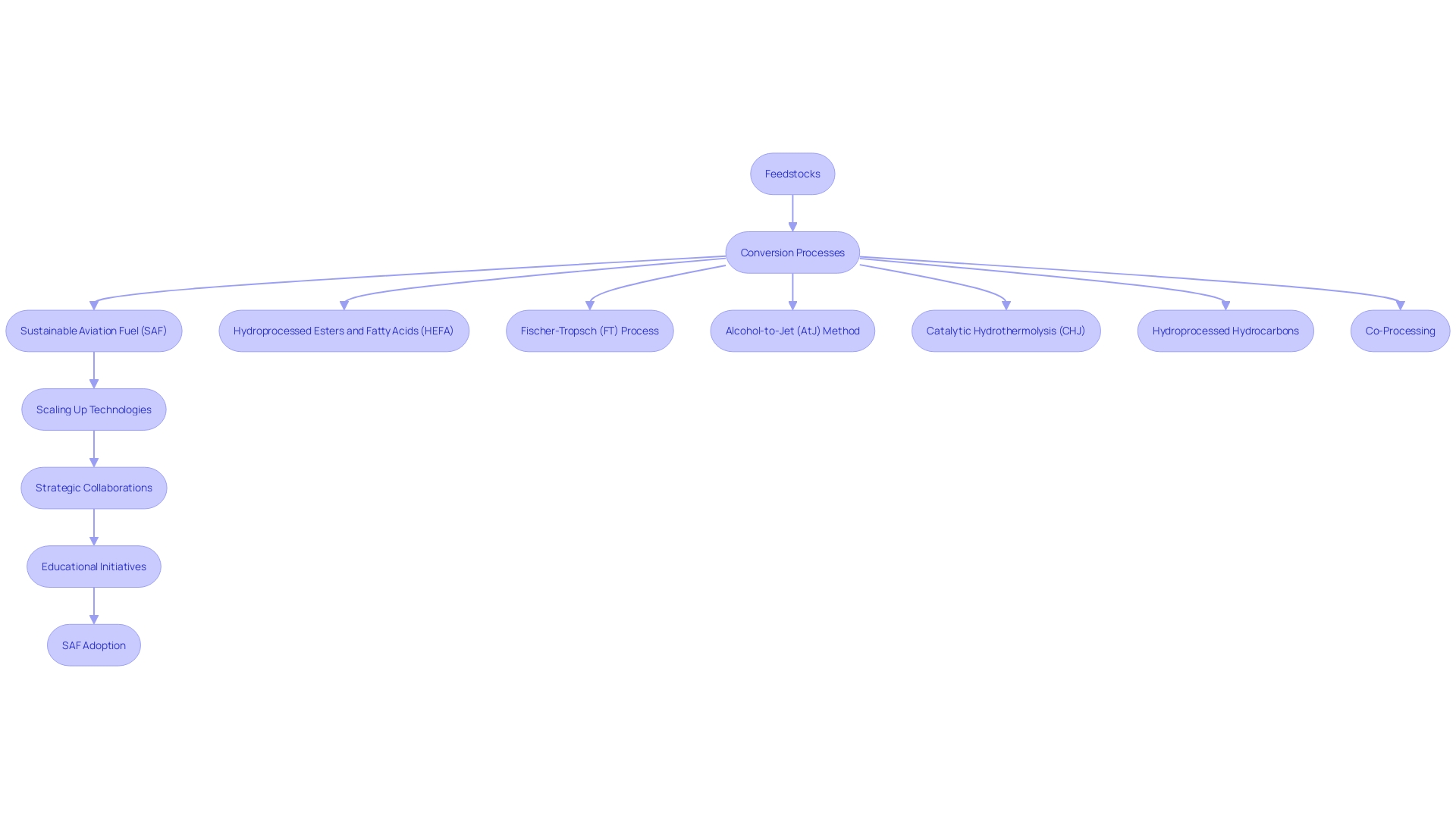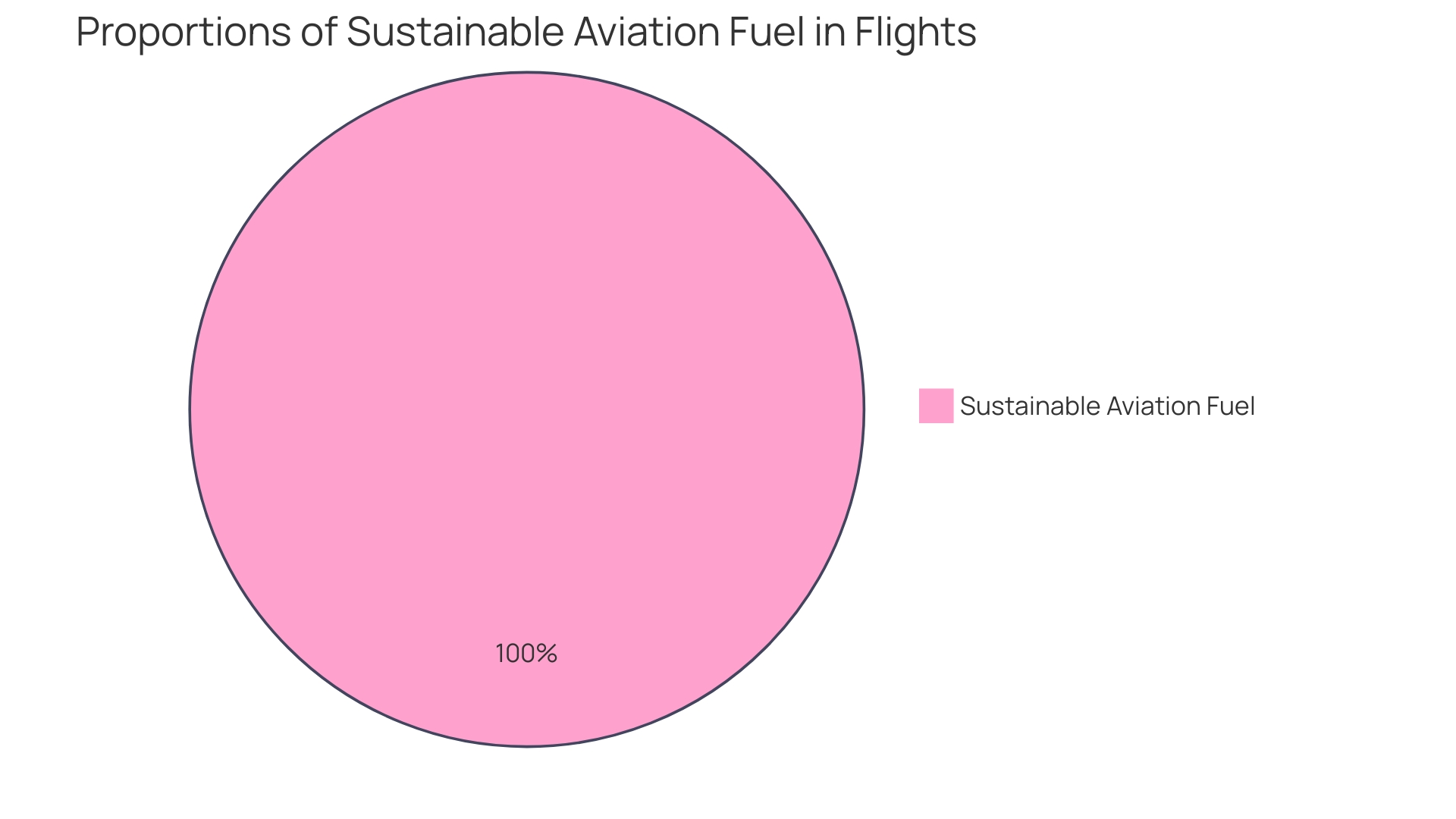Introduction
The production of Sustainable Aviation Fuel (SAF) is propelling the aviation industry towards carbon neutrality. By utilizing diverse feedstocks such as non-edible oils, agricultural residues, municipal solid waste, and dedicated energy crops, SAF offers a multifaceted approach to reducing aviation's carbon footprint. This article explores the various feedstocks and production technologies driving SAF's development, as well as the challenges and future developments in scaling up production to meet growing demand.
With the ambitious goal of eradicating carbon emissions by 2050, the aviation sector is committed to a sustainable future. The collaboration between industry leaders, policy initiatives, and innovative production techniques all contribute to the trajectory towards a more sustainable aviation sector. As the industry evolves, the exploration of diverse feedstocks and innovative production techniques will be pivotal in ensuring a resilient and sustainable supply of aviation fuel.
Feedstocks for SAF Production
The creation of Sustainable Aviation Fuel (SAF) symbolizes a guiding light of advancement in the field's pursuit of carbon neutrality. By harnessing a variety of feedstocks such as non-edible oils, agricultural residues, municipal solid waste, and dedicated energy crops, SAF offers a multifaceted approach to reducing aviation's carbon footprint. This adaptability in raw materials is not only a testament to the innovative spirit of the sector but also a strategic move to mitigate the risks associated with feedstock availability and sustainability.
For instance, the historic transatlantic flight powered by a blend of fat and sugar-based SAF underscores the potential of alternative feedstocks to revolutionize air travel. This pioneering achievement, coupled with the ambitious goals set by major airlines to eradicate their carbon emissions by 2050, exemplifies the sector's commitment to a sustainable future. Nevertheless, the hurdle persists in expanding SAF manufacturing to satisfy the increasing need, as demonstrated by the reality that the present SAF output in the United States fulfills less than 0.2 percent of the total jet fuel consumption for the sector.
Despite the obstacles, the collaborative endeavors of alliances like Airbus and Neste, and the backing of policy initiatives such as the Biden administration's objective to substantially enhance SAF manufacturing by 2050, showcase a distinct path towards a more eco-friendly air travel industry. As the field progresses, the ongoing investigation of varied feedstocks and the advancement of inventive manufacturing methods will be crucial in guaranteeing a resilient and environmentally-friendly provision of air travel fuel.
Technology Pathways for SAF Production
Sustainable Fuel (SAF) is produced through various technology pathways, each contributing uniquely to the industry's greener future. One such method is hydroprocessed esters and fatty acids (HEFA), utilizing fats and oils to create a cleaner-burning jet fuel. The Fischer-Tropsch (FT) process, another pathway, converts a mixture of carbon monoxide and hydrogen into liquid hydrocarbons, offering an alternative to conventional jet fuel. The alcohol-to-jet (AtJ) method transforms ethanol, a type of alcohol commonly derived from biomass, into jet fuel, marking a significant step for companies like LanzaJet, which recently celebrated the opening of the world's first ethanol-to-SAF facility in Georgia.
Advancements in catalytic hydrothermolysis (CHJ) create jet fuel from waste and residues, demonstrating the potential of this technology to tap into previously unusable resources. Hydroprocessed hydrocarbons, esters, and fatty acids (HC-HEFA) present another pathway, expanding the types of feedstock that can be used for SAF manufacturing. Co-processing allows the integration of renewable feedstocks with conventional fuel refining, streamlining the transition to SAF. With only 0.1% of flights currently powered by SAF, there is a significant opportunity for these technologies to scale up and meet the global demand for cleaner fuels.
Efforts are underway to construct a facility for SAF based on green hydrogen (eSAF) in East Germany, highlighting the strategic collaborations and educational initiatives needed to propel SAF adoption. As companies and governments strive for a more sustainable air travel system, these technology pathways are crucial in achieving carbon-neutral goals.

Case Study: Existing Commercial Producers of SAF
Groundbreaking companies in the air transport sector are making remarkable progress in the production of Sustainable Aviation Fuel (SAF), a vital element in the sector's pursuit of decarbonization. These trailblazers are leveraging cutting-edge technologies to transform various feedstocks into SAF, which is instrumental in reducing the carbon footprint of air travel. Case in point, Company X has made headlines with its revolutionary facility, designed to churn out SAF at scale. This accomplishment is proof of the practical potential of SAF in meeting the industry's sustainability goals.
The collaboration between Neste and Airbus represents a monumental partnership aimed at reducing emissions in the field of air transportation. Through initiatives like Neste Impact, companies are provided with viable solutions to reach sustainability targets effectively. Neste's dedication to responsibly sourced raw materials and adherence to rigorous sustainability audits ensures that their SAF manufacturing aligns with the highest sustainability standards. Furthermore, the notable inauguration of LanzaJet's Freedom Pines Fuels facility in Georgia signifies a significant achievement; it is the world's initial ethanol-to-SAF manufacturing plant, demonstrating a groundbreaking approach to decarbonized flight.
Virgin Atlantic, a company with a legacy of innovation and exceptional customer service, has also made significant contributions. With a network that spans across the globe, Virgin Atlantic's recent expansion in the US and its collaborative Joint Venture with Air France-KLM and Delta Air Lines reflect a shared commitment to a sustainable future. The airline's efforts are acknowledged in the broader narrative of the aviation sector's journey towards achieving net-zero carbon emissions.
Recent reports emphasize the collaborative efforts required from stakeholders across the air travel, energy, and public sectors to establish a conducive environment for SAF scale-up. As the air travel sector continues to prioritize safety and efficiency, advancements in sustainable aviation fuel development and utilization offer a clear pathway to addressing the challenges posed by climate change, ensuring a healthier planet for future generations.
Challenges and Future Developments in SAF Production
Sustainable Aviation Fuel (SAF) represents a significant stride towards greener skies, yet it faces the challenge of scaling manufacturing to align with growing demand. As the aviation sector aims to reduce its carbon emissions by 50% by 2050, the current manufacturing of SAF is inadequate, representing less than 0.2% of total jet fuel consumption. Innovative pathways for SAF creation are being explored, including the use of biomass, waste oils, and even municipal waste. Despite the potential, the shift to SAF encounters obstacles such as high manufacturing expenses and stringent regulatory frameworks.
Technological advancements and strategic partnerships are crucial in advancing the development of SAF. For example, the partnership between Airbus and Neste demonstrates the sector's commitment to decarbonization. This initiative, among others, is contributing to the development of more sustainable fuel options which are compatible with existing jet engines, ensuring safety and reliability remain uncompromised.
Recent achievements, such as a transatlantic flight powered by a blend of conventional jet fuel and SAF derived from fats and sugars, showcase the tangible progress being made. These milestones are backed by substantial public and private investments aimed at increasing SAF availability and affordability. The next phase of growth will depend on novel methods like power-to-liquid technology, utilizing renewable electricity and carbon capture to generate almost unlimited fuel supplies.
In the context of escalating climate change impacts, entities like TotalEnergies are actively engaging in the sustainable energy dialogue, making commitments ahead of global conferences like COP28, and forging agreements with companies like TexGen to foster a more integrated energy landscape.
To meet the ambitious targets set by airlines and governments alike, the SAF industry must continue to innovate, scaling up production to not only meet but exceed the demands of a rapidly evolving air travel sector. The journey ahead is challenging, but the concerted efforts of stakeholders worldwide signify a promising horizon for sustainable aviation.

Conclusion
The production of Sustainable Aviation Fuel (SAF) is propelling the aviation industry towards carbon neutrality. By utilizing diverse feedstocks and innovative production technologies, SAF offers a multifaceted approach to reducing aviation's carbon footprint. Pioneering companies and strategic partnerships demonstrate the industry's commitment to sustainability.
SAF production encompasses various technology pathways, including HEFA, FT, AtJ, CHJ, HC-HEFA, and co-processing. These pathways have the potential to scale up and meet the global demand for cleaner aviation fuels.
Collaborations between companies like Neste and Airbus, along with the opening of LanzaJet's ethanol-to-SAF plant, showcase the practical potential of SAF in reducing aviation emissions.
Despite challenges like production costs and regulatory frameworks, technological advancements and strategic partnerships are pivotal in advancing SAF production. Power-to-liquid technology, leveraging renewable electricity and carbon capture, holds promise for the next phase of growth.
In conclusion, the production of Sustainable Aviation Fuel is driving the aviation industry towards carbon neutrality. Diverse feedstocks, innovative technologies, and strategic partnerships contribute to a more sustainable aviation sector. Pioneering companies and advancements in SAF production pathways exemplify the industry's commitment to reducing emissions.
Overcoming challenges and embracing novel methods will accelerate the journey towards a greener future for aviation.




